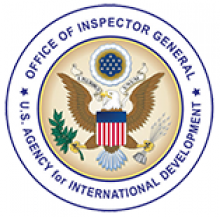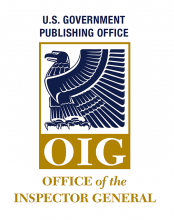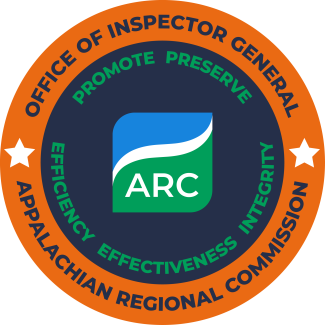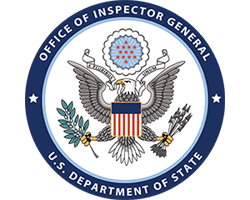12/27/2022
U.S. Agency for International Development
Independent Audit Report on the Statement of Proposed Direct Costs of Catholic Relief Services, United States Conference of Catholic Bishops and Affiliates in Iraq, Cooperative Agreement 72026718CA00001, June 14, 2018, to September 30, 2021
Other
View Report
View Report Highlights
Submitting OIG
U.S. Agency for International Development OIG
Number of Recommendations
2
Report Number
8-267-23-003-D
12/27/2022
Government Publishing Office
GPO Consolidated Financial Statements Annual Report FY22
Audit
Agency-Wide
View Report
View Report Highlights
Submitting OIG
Government Publishing Office OIG
Report Description
Independent Auditors' Report on the Government Publishing Office (GPO) fiscal year (FY) 2022 Financial Statements.
Number of Recommendations
0
12/27/2022
Internal Revenue Service
Fiscal Year 2023 Biannual Independent Assessment of Private Collection Agency Performance
Audit
Agency-Wide
View Report
View Report Highlights
Submitting OIG
Treasury Inspector General for Tax Administration
Number of Recommendations
12
Report Number
2023-30-005
12/23/2022
U.S. Agency for International Development
OIG Letter to Senator Rick Scott on USAID Funds for Disaster Relief in Cuba Following Hurricane Ian
Other
Agency-Wide
View Report
View Report Highlights
Submitting OIG
U.S. Agency for International Development OIG
12/23/2022
Appalachian Regional Commission
City of Oak Ridge
Audit
View Report
View Report Highlights
Submitting OIG
Appalachian Regional Commission OIG
Report Description
The audit objectives were to determine whether program funds were managed in accordance with the ARC and Federal grant requirements
Number of Recommendations
0
Report Number
OIGRpt23-06
12/23/2022
Appalachian Regional Commission
Advantage Valley
Audit
View Report
View Report Highlights
Submitting OIG
Appalachian Regional Commission OIG
Report Description
The audit objectives were to determine whether program funds were managed in accordance with the ARC and Federal grant requirements
Number of Recommendations
0
Report Number
OIGRpt23-07
12/22/2022
Department of Health & Human Services
Medicare Advantage Compliance Audit of Specific Diagnosis Codes That Cigna-HealthSpring of Tennessee, Inc. (Contract H4454) Submitted to CMS
Audit
View Report
View Report Highlights
Submitting OIG
Department of Health & Human Services OIG
Number of Recommendations
3
Report Number
A-07-19-01193
12/22/2022
Department of Health & Human Services
CMS Should Bolster Its Oversight of Manufacturer-Submitted ASP Data to Ensure Accurate Part B Drug Payments
Inspection / Evaluation
Agency-Wide
View Report
View Report Highlights
Submitting OIG
Department of Health & Human Services OIG
Number of Recommendations
1
Report Number
OEI-03-21-00390
12/22/2022
Department of Health & Human Services
Manufacturers May Need Additional Guidance To Ensure Consistent Average Sales Price Calculations
Inspection / Evaluation
Agency-Wide
View Report
View Report Highlights
Submitting OIG
Department of Health & Human Services OIG
Number of Recommendations
1
Report Number
OEI-BL-21-00330
12/22/2022
Department of State
Information Brief: Oversight Observations to Inform the Department of State Ukraine Response
Other
Agency-Wide
View Report
View Report Highlights
Submitting OIG
Department of State OIG
Number of Recommendations
0







